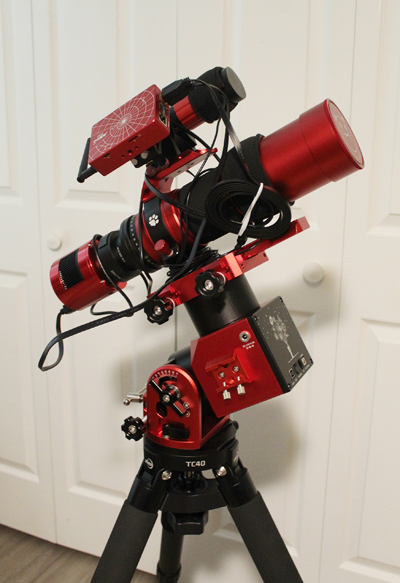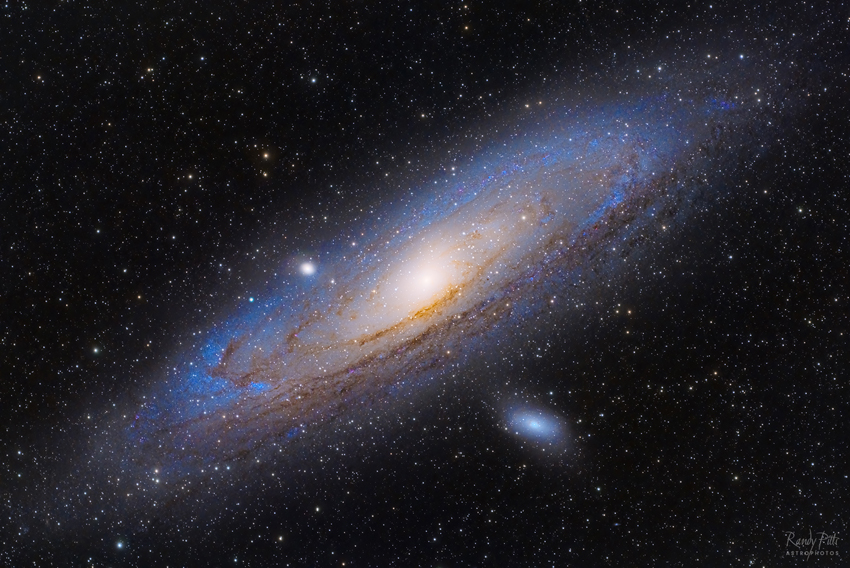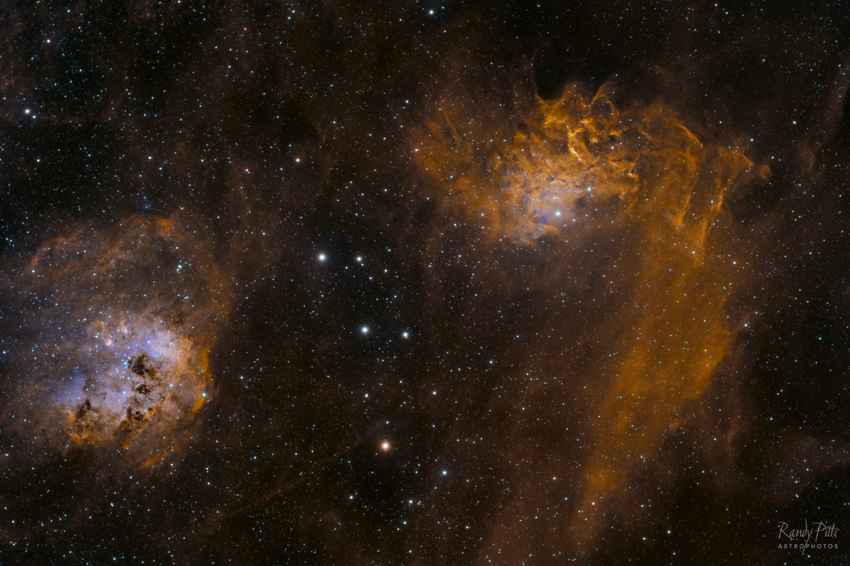Randy Pitts astrophotography, continued:

My current set up consists of the WO RedCat 51, the ZWO ASI 183 MC Pro cooled OSC astronomy camera, the ZWO 32mm mini guide scope, and ZWO ASI 120 MC-S camera as a guide camera, the AM 5 mount and tripod, dew heater straps for the guide scope and telescope, and the ASI Air Plus to run it all, plus a Jackery portable rechargeable battery to power it all. The total weight of the rig tops out at about 30 pounds which is really important!
I think the thing I enjoy the most is the processing of my images. I’m somewhat obsessed with processing and I’m always trying to figure out how to get the most out of my data. I’ve had experience with Photoshop with my years in graphic design, but I think I’ve taught myself more about the program over the last two years than I ever knew previously.
The stacking program I currently use is Siril 1.2.0. The fact that it’s a free program is pretty amazing as it has quite a lot of features. I guess at some point I’ll switch over to Pixinsight, but it’s hard when Siril does most of the same things.
I never forget my calibration frames. I always use the darks, flats, and bias frames to counteract noise. My camera is known for an issue called “Amp Glow”, a by-product of the camera sensor. I have never had an issue with my calibration frames not completely eliminating the glow.
My typical work flow is stacking through Siril using the OSC Pre-processing script. Once stacked, I usually will use Siril for cropping the image, Background Extraction for eliminating gradients, Photometric Color Calibration for color, Green Noise reduction, and finally using the Starnet ++ function through the Star Processing menu to create Starless and Star Mask layers. I then open the Starless layer in Siril and typically do a mild initial Asinh Stretch and then use the Generalized Hyperbolic Stretch Transformation menu to further stretch the starless layer dynamic range. Once I am satisfied with it, I save as a TIF file and open in Photoshop.
There are several plug-ins available for Photoshop specific to astrophotography that I use consistently in my processing. The Astronomy Tools Actions set has several key functions I find invaluable. I don’t use them all, but the ones I do use I couldn’t do without. The noise reduction tools are handy as is the contrast action.
I also use Star Xterminator, and Noise Xterminator through Photoshop. Starnet++ does a great job in Siril most of the time, but not always. Having Star Xterminator gives me another option should Starnet++ leave too many star artifacts on the starless layer. Usually if one option doesn’t work, the other will.
My Photoshop workflow is typically using levels and curves to improve the dynamic range, Noise Xterminator for noise, and making color adjustments. Photoshop’s ability to create masks to selectively adjust color or levels is incredible.
I will then bring whatever I’ve done in Photoshop to the Starless image back into Siril and save it as a 32-bit “.fits” file and then use the Star Recomposition function to recombine the Starmask and Starless images. I like this function because you can control how big or how small you want your stars when combining the two files. I again save this combined image as a .Tif file and then save to the desired size in Photoshop as TIF or JPEG.
There are several great videos on YouTube regarding Siril and Photoshop that have helped me understand how to use the software I have to get the most out of my processing. I still have a long way to go, but I am really enjoying the journey.


